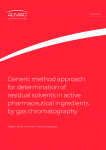AI-driven insights: SOMS boosts clinical trial success

Kizewski delves into how SOMS is changing trial design, optimizing patient safety, and enhancing the chances of FDA approval, providing critical insights into the future of AI-driven clinical trial optimization.
Impact of Sub-population Optimization & Modeling Solution (SOMS)
How has SOMS transformed the landscape of clinical trials since its implementation?
The Sub-population Optimization & Modeling Solution (SOMS) has made a significant impact on clinical trials by enabling the identification of biomarkers associated with specific patient subgroups that can predict treatment response. This has allowed researchers to find patient subgroups with higher efficacy and identify signals indicating a patient's risk for adverse events, thus increasing trial success rates.
SOMS provides ongoing optimization by tracking subgroups throughout the trial, validating initial hypotheses, and continuously running biomarker analyses to uncover new subgroups. Even for trials that do not initially leverage SOMS, it can be implemented later, particularly in cases of slow patient recruitment or when efficacy comparisons between treatment and placebo groups yield no significant differences.
Another important application of SOMS is trial simulation and benchmarking. Researchers can use simulated or real-world data to predict trial outcomes based on specific patient characteristics, simulating various scenarios and utilizing historical data to create more accurate patient pools. This feature allows SOMS to benchmark against standard care practices or other therapies within a specific therapeutic area, providing valuable insights into how a new therapy might perform in real-world scenarios.
Considering the high costs and failure rates associated with clinical trials, with over a billion dollars often invested and only 12% of therapies successfully gaining FDA approval, SOMS proves invaluable in optimizing trials and controlling for variables that might otherwise go unnoticed or take too long to identify.
AI integration and functionality
How does the integrated AI in SOMS enhance the precision of inclusion and exclusion criteria in clinical trials? What unique AI capabilities does SOMS offer that differentiate it from other trial optimization technologies?
SOMS leverages AI to enhance the precision of inclusion and exclusion criteria in clinical trials. Unlike traditional methods that rely on preselected variables, SOMS analyzes multiple variables simultaneously, allowing for a comprehensive analysis of all potential patient subgroups.
The efficiency of SOMS is striking. Once the data set is prepared, SOMS can deliver results within 30 seconds for phase 1 and 2 data and within a few hours for larger phase 3 datasets. This efficiency allows continuous optimization throughout the trial lifecycle, reducing process times by up to 20x compared to traditional methods.
Using validated, open-source algorithms, SOMS offers credibility when presenting results to health authorities and flexibility in modifying criteria as needed. Its repeatability across trials within a portfolio and effectiveness across multiple therapeutic areas set it apart from other trial optimization technologies.
Rescue strategies and trial failures
What are the common indicators that a trial is struggling, and how does SOMS intervene with rescue strategies? Can you share a case study where SOMS successfully implemented a rescue strategy to prevent a trial from failing?
SOMS plays a crucial role in rescuing struggling clinical trials. Indicators of a trial in distress include unexpected adverse events, lack of efficacy in the treatment group, and patient retention issues. SOMS intervenes by quickly analyzing data and predicting which subgroups are more susceptible to these events, allowing for targeted interventions.
A real-world example involves a Phase 3 trial in multiple myeloma, where SOMS identified two biomarkers indicating increased risk of cardiac failure. This information enabled sponsors to target high-risk groups, implement safeguards, and introduce interventions to reduce cardiac failure events, ultimately preventing the trial from failing.
Identification of efficacious subgroups
How does SOMS identify and optimize efficacious subgroups within a trial? What methodologies or algorithms are used to ensure these subgroups are accurately identified?
SOMS employs a sophisticated algorithm called Subgroup Identification Based on Differential Effect Search (SIDES) to identify and optimize efficacious subgroups within a trial. This algorithm, along with its variations (basic SIDES, fixed SIDES, and adaptive SIDES), allows for high accuracy and configurability in analyzing trial data to identify patient subgroups most likely to respond positively to the treatment.
Patient safety and adverse events
How does SOMS pinpoint subgroups prone to adverse events, and what steps are taken to ensure patient safety? Can you discuss the impact of these safety measures on overall trial integrity and success rates?
While not every trial will reveal clear subgroup distinctions related to adverse events, SOMS is highly effective at identifying patterns when they exist. The impact of SOMS-driven safety measures on trial integrity and success rates depends on the specific findings for each trial, the identified risks, and how researchers act on the information provided by SOMS.
Challenges in patient recruitment
How does SOMS address and overcome patient recruitment challenges in clinical trials? What are the key factors that SOMS considers to enhance patient recruitment and retention?
SOMS addresses patient recruitment challenges by providing a targeted approach to identifying suitable candidates for clinical trials. While it may not directly improve recruitment numbers, SOMS enhances the quality and relevance of recruited patients, potentially leading to better trial outcomes and faster recruitment due to a more focused pool of candidates.
Financial and therapeutic outcomes
In what ways does SOMS contribute to improving both financial and therapeutic outcomes for sponsors? Can you provide data or metrics that illustrate the financial benefits of using SOMS in clinical trials?
SOMS contributes to improving therapeutic and financial outcomes for sponsors through its data-driven, targeted approach to trial optimization. In one case, a Phase 3 trial for an antibacterial treatment initially showed no overall treatment effect. SOMS identified a responsive subpopulation, leading to FDA approval and avoiding a late-stage failure, which can cost companies hundreds of millions of dollars.
Implementation across trial phases
How does SOMS support sponsors across different phases of a clinical trial, from design to closeout? Are there specific phases where SOMS is particularly impactful or beneficial?
SOMS offers support across all phases of clinical trials, with its impact most pronounced between phase 2 and phase 3. In phase 1, SOMS uses existing data to simulate patient responses, helping to predict outcomes. During phase 2, it identifies subgroups of interest, enhancing trial design and patient selection. The transition from phase 2 to phase 3 sees the greatest impact, as SOMS combines data from previous phases to optimize the phase 3 trial design, increasing the chances of success and regulatory approval.
SOMS can also be used post-approval for benchmarking against standards of care or other therapies, potentially securing higher reimbursement rates from insurance companies.
Success rate of FDA approvals
Given that only 12% of trials result in FDA-approved therapies, how has SOMS contributed to improving this success rate? Are there any examples where SOMS has directly influenced a trial’s path to FDA approval?
SOMS has significantly contributed to improving the success rate of clinical trials. A notable example involves a Phase 3 trial for bacterial infections where SOMS identified a subgroup of patients with a positive treatment outcome, leading to FDA approval for a therapy that initially showed no overall effect.
Future of clinical trial optimization
What advancements or enhancements are being developed for SOMS to further optimize clinical trials? How do you see the role of AI and advanced analytics evolving in the future of clinical trial optimization?
The future of clinical trial optimization, particularly with AI-driven tools like SOMS, is on the cusp of significant advancements. Upcoming enhancements aim to integrate SOMS seamlessly with other technologies, such as data management systems, enabling real-time analysis and dynamic trial management. The incorporation of SOMS into risk-based quality management tools could further optimize trial conduct and patient safety.
The evolution of algorithms is also critical to SOMS's future, with a focus on developing specialized algorithms for specific therapeutic areas, potentially leading to more nuanced and accurate insights. The broader role of AI and advanced analytics is expected to lead to more integrated, intelligent, and responsive systems, revolutionizing how new therapies are developed and brought to market.






















